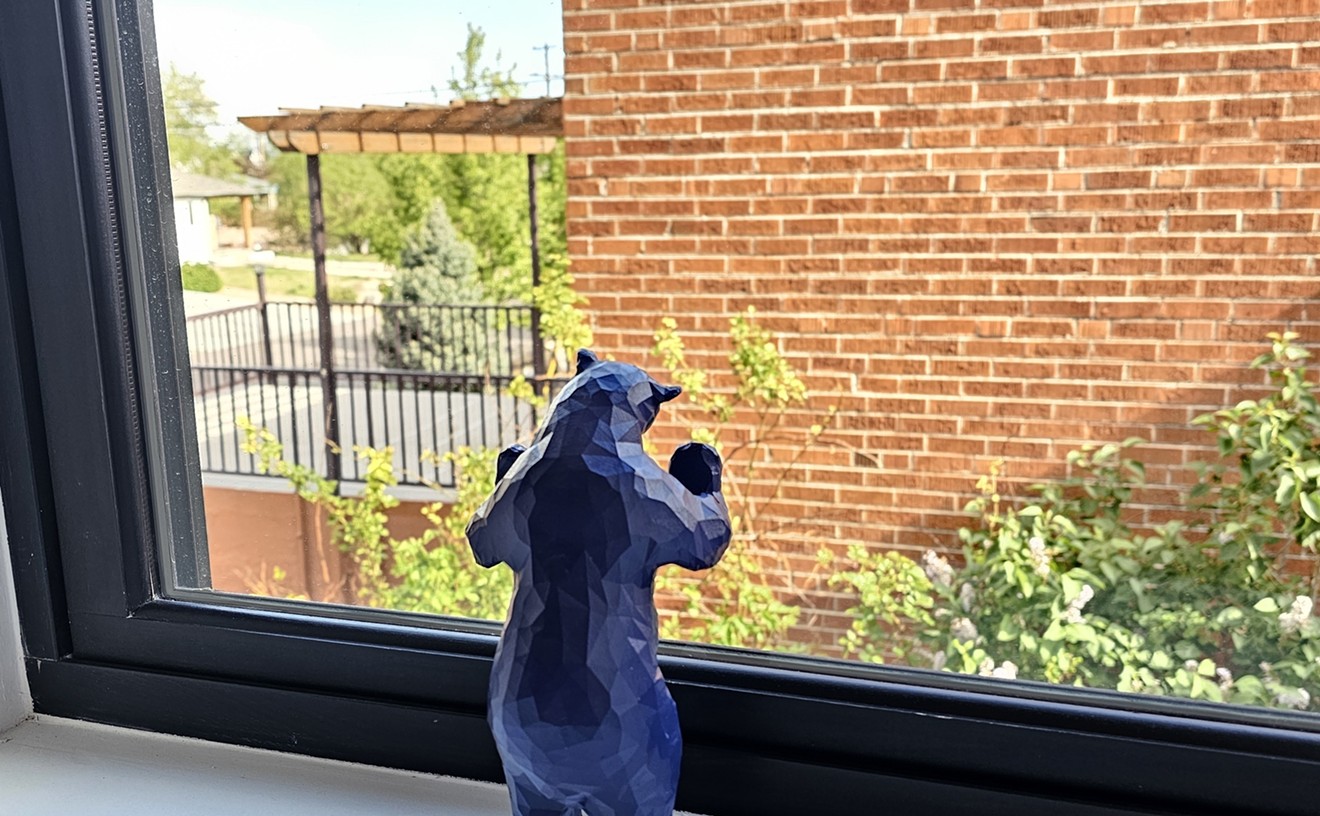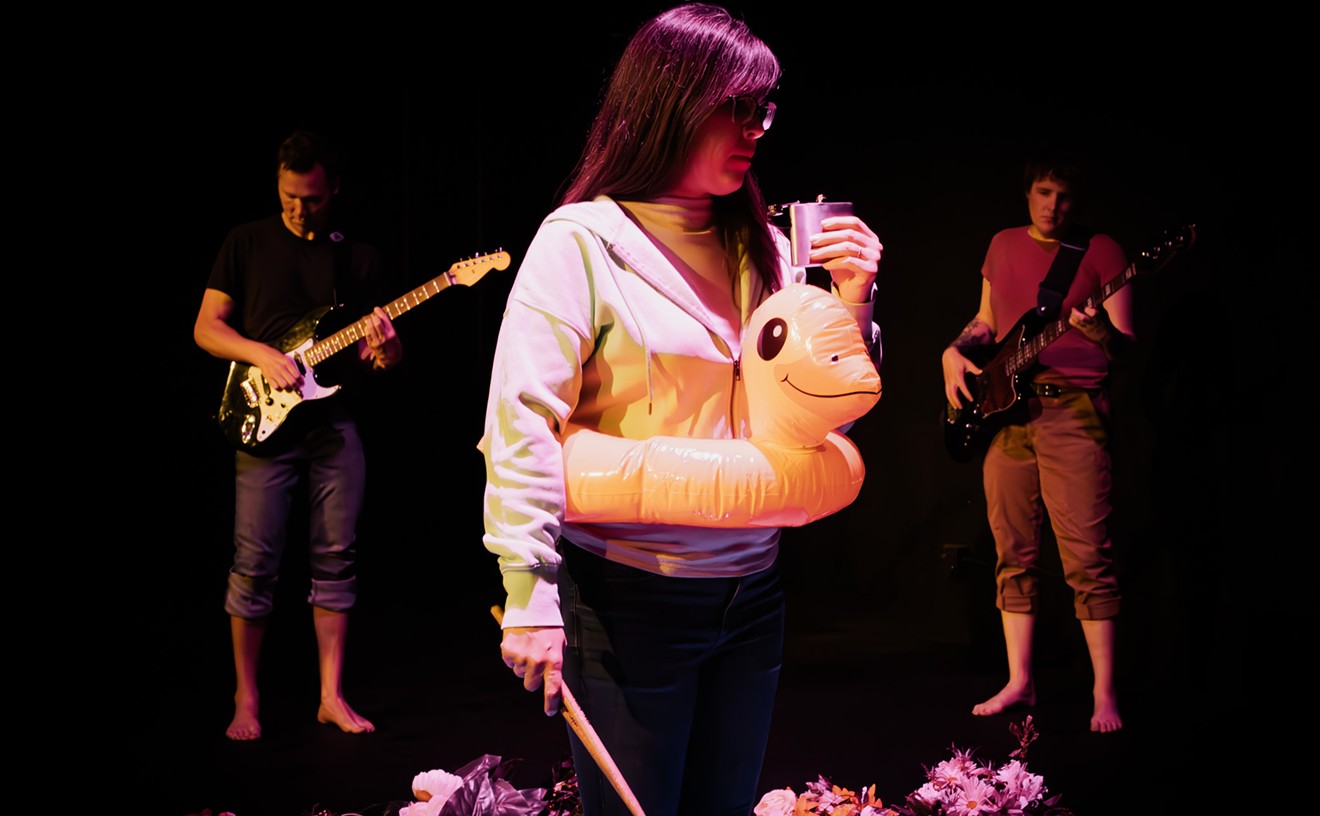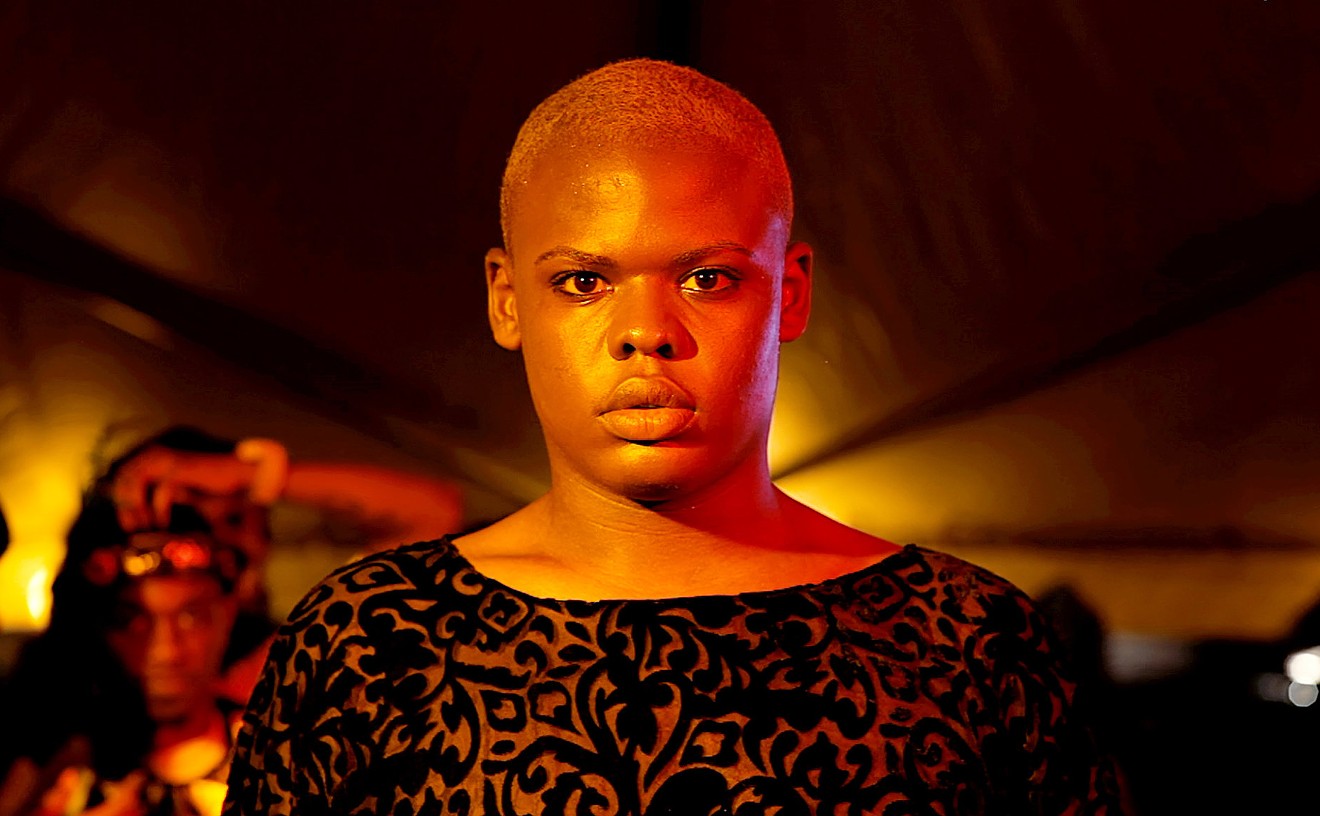The marvelous shows she presented clearly demonstrated her intrepid leadership and a penetrating grasp of contemporary art. And in spite of severe budgetary limitations and a facility with many problems, the least of which was the absence of climate control, Payton was able to weave a credible art institution out of whole cloth, making the arduous trip to Boulder worth the trouble.
Then, last fall, a smoldering conflict between Mark Masuoka, the director of the Museum of Contemporary Art/Denver, and Sue Cannon, one of the institution's founders and the former president of its board of trustees, came to a head -- the two had publicly argued over MoCA/D programming -- resulting in Masuoka's resignation. Masuoka went on to form a partnership with Sandy Carson, resulting in the creation of the Carson-Masuoka Gallery. A troubling aspect of this business deal was the fact that Carson was on MoCA/D's board of trustees at the time.
Despite the conflict, there's no denying -- even if some now attempt to do so -- that Masuoka brought MoCA/D a long way in a short time. His greatest accomplishment was the physical reorganization of the museum, a two-story commercial space in Sakura Square that had once been a fish market and still looked like one when he took over. Another of his successes was the Colorado Biennial, a show that, while it didn't genuinely reflect the state's art scene, was intelligent in its own way; more than that, it was courageous. The show would be Masuoka's swan song at MoCA/D, however, as he left just after it opened.
So last winter, as the MoCA/D job opened up, Payton was mostly occupied by reading and puttering around the house -- surely, it was a situation made in heaven. The whole thing seemed inevitable, so no one was surprised when Payton was selected to take over the helm at MoCA/D. True to form, she started working even before she began drawing a salary. But, then again, she had to.
There was something unusual about MoCA/D at the time. No, it wasn't the awkward acronym, MoCA/D; Payton simply changed that to MCA. It was the museum's program, or lack thereof. At the time Payton came on board, there was nothing in the wings ready to go when Colorado Biennial closed. Typically, exhibition schedules are firmly laid out for a minimum of a year in advance, and in some venues, more than a year. It was absolutely unprecedented not to have an upcoming show fully planned and organized way before the show preceding it had opened.
"The former administration's programming ended with Biennial," Payton says. "There were show ideas in the works, but nothing was firm. And as far as I know, there were only limited plans for any future programming at the museum. My first thought was to extend Biennial, but it turned out that a number of the artists in the show had made prior commitments and their pieces had to go elsewhere."
Why no schedule was in place remains a mystery. If I didn't know better, I'd think Masuoka was trying to close the place down.
Payton was forced to throw together a schedule virtually overnight. The need was made even more urgent because the MCA had been booked for a wedding right after Biennial closed, and empty galleries simply wouldn't do. Payton's creative solution was to have freelance curator Sean Hughes organize an instant show of the students, past and present, of painter Clark Richert. The result was beautiful, and the wedding went off without a hitch. After that came an oddball show of contemporary art organized by a New Yorker with Denver connections, Devon Dikeou. Then a traveling architecture show paired with a solo devoted to Jackie Greber's light sculptures was presented.
Now, filling most of the Main Gallery on the first floor, there's 2000 Dragons: Don Ed Hardy, a traveling exhibit made up of a single mammoth piece. And upstairs in the Mezzanine Gallery is The Sensational Line, a group show surveying recent drawings by nationally and internationally known contemporary artists working on paper. Also, in the former cafe, Denver artist Barbara Groh combines performance art with drawing by continuing to work on her mammoth pencil-on-paper piece after it was installed.
The 2000 Dragons exhibit, which Payton organized herself, really must be seen to be believed. It consists of a scroll that measures four feet by five hundred feet, and it has 2,000 dragons painted on it, among a raft of other images. Hardy painted the scroll using a roll-through easel; he began on January 1, 2000, and he completed it, working in fits and spurts, on July 28 of the same year. But the piece was conceived some 24 years earlier, in 1976, a year of the dragon in the Asian Zodiac. Hardy decided to create a millennium piece based on the theme of 2,000 dragons because the year 2000 was another year of the dragon.
Dragons and Asian culture fit perfectly within Hardy's eclectic interests. Born in Southern California in 1945, he has lived in various places around the world and now spends part of the year in Oakland and the rest in Honolulu. While working on his BFA in print-making at the San Francisco Art Institute during the late 1960s -- when else? -- he also took an apprenticeship in the art of tattooing. Being a tattoo artist had been a goal of his since he'd been a child. Dragons, of course, are a traditional tattooing motif, both in Asia and the U.S.
In the early '70s, Hardy lived in Japan for a year in order to study with a traditional Japanese tattoo master; he subsequently returned to work in Japan in the 1980s.
Several years ago, Hardy established a Colorado connection when he contracted with Boulder County printmaker Shark's Inc. to pull his prints. The artist subsequently designed the shark that is now the symbol for Shark's and designed and executed a matching tattoo for master printer Bud Shark.
Through Shark, Payton came to know Hardy, and she exhibited his work at BMoCA. Then, a few months ago, while Hardy was in the area to work with Shark's again, Payton learned that 2000 Dragons was traveling and had an opening in its schedule. So, presto, a compelling summer attraction was lined up in the nick of time.
The scroll, painted on untearable paper, winds its way around nearly two thirds of the Main Gallery at MCA, with the remaining third closed off to the public. It's been cleverly installed by being suspended from wires that run along the top of the scroll. Unrolling of the entire piece was expertly done by the MCA's exhibition coordinator, Jason Musgrave.
As you wander through the scroll, laid out in the manner of a simple, easy-to-follow labyrinth, it unfolds in a captivating way. The dragons, in a variety of sizes from tiny to huge, have been done in a range of styles; some are clearly inspired by Oriental art, and some are fairly abstract. In addition to the dragons, there are other Asian-inspired images, including waves and clouds clearly derived from Japanese prints. Other parts of the scroll are thoroughly non-objective, with a lot of abstract expressionist scribbles, drips and runs seen throughout.
Regardless of the imagery, all of the drawings have been carried out with a deft and quick hand. Most of the scroll has a tremendous immediacy, with the artist's touch being downright palpable in places.
This same quality is seen in many of the works on paper in The Sensational Line as well, and many of the artists here look for inspiration in unlikely sources, too. Hardy finds tattoos inspirational; these artists have used underground comix, graffiti, surrealism and dumb art.
A few years ago, Payton was one of the organizers of a BMoCA show that explored the related influences of dumb-art pioneer Philip Guston and underground comix master R. Crumb. In a way, The Sensational Line revisits these concerns, but without Guston and Crumb. Many of the works Payton chose for this show are difficult, owing to a decidedly in-your-face attitude. In Chris Johanson's "Untitled," an installation in ink on paper in which a doglike man is on all fours facing a leering man, the text that's part of the drawing is sprinkled with obscenities such as "asshole" and "fucks." Perhaps Johanson has expressed his sentiments too directly, but we all understand what he means when he points out that bad bosses sometimes push you around just because they can.
Johanson's style, as is the case with many of other artists here, has a cartoonish quality, but his work isn't whimsically conceived. Neither are the two pencil, clearfilm and enamel-on-paper works by Elliott Green from his "Un-named" series, which may be the best things in this show. A secret to Green's artistic success is his careful craftsmanship. He may be looking at underground comix to create his figures, but he's using a scrupulous and meticulous technique to render them.
Nearly everything in the show is representational and concerns contemporary refinements of the figural revival that began in the 1970s. Even those few pieces that are abstract are one step removed and are more like representations of abstracts. In Nina Bovasso's "Untitled," hundreds of little shapes are crammed into the drawing. Many of the shapes are seen in various, often opposing perspectives suggestive of inconsistent three-dimensional spaces.
This fall, after the current shows close, MCA will present the first major exhibit since Payton took over and the only one in which there has been a gracious amount of set-up time. Go Fish will be a show of photo-based work on the topic of fish, and it will be put together by Jane Fudge. Now living in Oregon, Fudge spent her entire adult life, from the 1970s until last year, contributing to the local art world. "I thought it was important to keep Jane involved with the Denver art scene," says Payton. "So I asked her to do the big fall show."
Considering the many remarkable things that Payton has done since she got to MCA just a few months ago -- and all without breaking a sweat -- don't be surprised if you think of that old saying: If you're given lemons, make lemonade.










